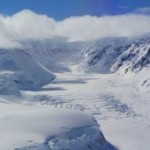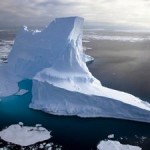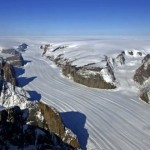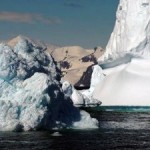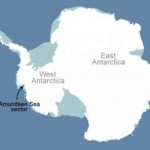 Future sea level rise due to the melting of the Greenland and Antarctic ice sheets could be substantially larger than estimated in Climate Change 2007, the Fourth Assessment Report of the Intergovernmental Panel on Climate Change (IPCC), according to new research from the University of Bristol.
Future sea level rise due to the melting of the Greenland and Antarctic ice sheets could be substantially larger than estimated in Climate Change 2007, the Fourth Assessment Report of the Intergovernmental Panel on Climate Change (IPCC), according to new research from the University of Bristol.
The study, published in Nature Climate Change, is the first of its kind on ice sheet melting to use structured expert elicitation (EE) together with an approach which mathematically pools experts’ opinions. EE is already used in a number of other scientific fields such as forecasting volcanic eruptions.
The ice sheets covering Antarctica and Greenland contain about 99.5 per cent of the Earth’s glacier ice which would raise global sea level by some 63m if it were to melt completely. The ice sheets are the largest potential source of future sea level rise – and they also possess the largest uncertainty over their future behaviour. They present some unique challenges for predicting their future response using numerical modelling and, as a consequence, alternative approaches have been explored.
One such approach is via carefully soliciting and pooling expert judgements – a practice already used in fields as diverse as eruption forecasting and the spread of vector borne diseases. In this study, Professor Jonathan Bamber and Professor Willy Aspinall used such an approach to assess the uncertainties in the future response of the ice sheets.
They found that the median estimate for the sea level contribution from the ice sheets by 2100 was 29 cm with a 5 per cent probability that it could exceed 84 cm. When combined with other sources of sea level rise, this implies a conceivable risk of a rise of greater than 1 m by 2100, which would have deeply profound consequences for humankind. The IPCC’s report provided figures ranging from 18 cm to 59 cm for six possible scenarios.
The researchers also found that the scientists, as a group, were highly uncertain about the cause of the recent increase in ice sheet mass loss observed by satellites and equally unsure whether this was part of a long term trend or due to short-term fluctuations in the climate system.
Professor Bamber said, “This is the first study of its kind on ice sheet melting to use a formalized mathematical pooling of experts’ opinions. It demonstrates the value and potential of this approach for a wide range of similar problems in climate change research, where past data and current numerical modelling have significant limitations when it comes to forecasting future trends and patterns.”
This study was part funded by Ice2sea – a major EU-funded programme to improve the projections of future global sea levels.
Details of the Study:
About Ice2sea
Ice2sea brings together the EU’s scientific and operational expertise from 24 leading institutions across Europe and beyond. Improved projections of the contribution of ice to sea level rise produced by this major European-funded programme will inform the fifth IPCC report (due in 2013). In 2007, the fourth Intergovernmental Panel on Climate Change (IPCC) report highlighted ice-sheets as the most significant remaining uncertainty in projections of sea level rise. Understanding about the crucial ice-sheet effects was “too limited to assess their likelihood or provide a best estimate of an upper bound for sea level rise”.
Source: University of Bristol.


